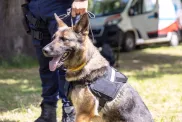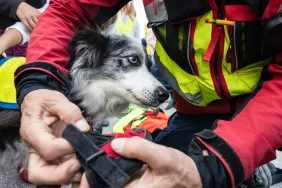You’ve done your homework and you’ve used all the latest methods to persuade your dog to follow your every command. But your work isn’t done. Training is a process, something that both you and your dog must be vigilant about maintaining. Here are simple 10 guidelines to help you keep Fido on the straight and narrow:
- Be prepared. Before bringing your new pet home, make sure you have the necessary items for daily care and initial training — a crate of the appropriate size for housebreaking, safe toys that can be stuffed with treats, collar, leash and anything specific that the dog’s former caretaker has suggested for his care.
- Consistency is key. Make sure everyone in the household knows what is expected of the dog, and have everyone follow the same rules.
- Set your dog up for success. Avoid situations which might trigger inappropriate behavior (for example, until your dog has been taught to sit quietly when greeting newcomers, crate him in another room before visitors arrive, thus preventing barking at the door and jumping up on people.)
- Supervision is vital! When your new pet is not right by your side, he or she should be in a cozy kennel with a chew toy or baby-gated in a safe area. Training is much more successful when you do not give a pup or even an adult dog an opportunity to make a mistake. Keep them close — if they are attached to your belt with a lightweight leash, then there is less opportunity to have an accident or engage in any inappropriate behavior.
- Don’t miss a chance to praise good behavior! Teach a short word like “yes!” or “good!” so you can quickly mark appropriate behavior when it occurs. If a behavior is reinforced positively, and rewarded with attention, it will be more likely to occur again.
- Provide acceptable replacements. For example, if pup is in the mood to chew, give him his Kong toy filled with treats, or a safe chew toy, so that he begins to discriminate and understand what he is allowed to chew.
- Avoid physical punishment, as it may lead to serious problems such as fear-related aggression or dominance behaviors down the road. If correction is needed, contact a professional to help you choose training techniques that can provide impersonal correction (such as a head halter, which self-corrects when a dog pulls on leash.)
- Be social! After a few days of settling in, provide appropriate socialization by exposing your dog to new people, other sociable pets and as many safe environments as you can find.
- Teach appropriate play. Avoid rough play (such as tug-of-war or wrestling games) since this may encourage mouthing or play biting.
- Know when to call a professional. If your pet seems to have any serious behavioral issues, contact your veterinarian for advice. They should be able to refer you to someone experienced in solving any problems you may be having with your dog.
Source: Adapted from the American Animal Hospital Association









